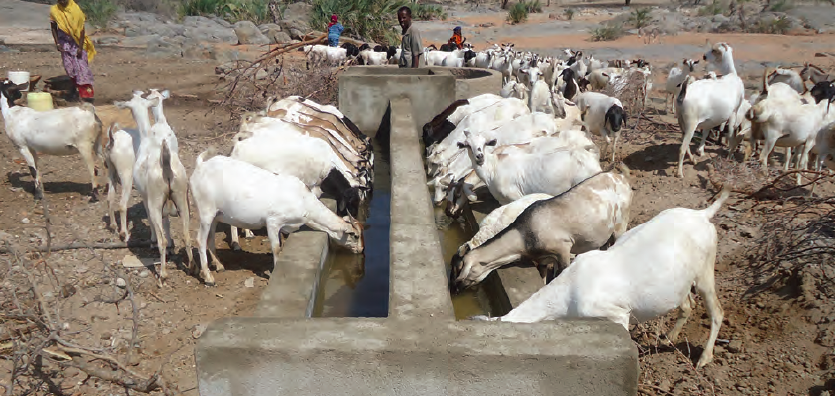Participatory risk analysis and integrated interventions to increase resilience of pastoral communities in Northern Kenya
 Summary of Field Exchange 49 article by Daniel Nyabera, Charles Matemo and Muriel Calo
Summary of Field Exchange 49 article by Daniel Nyabera, Charles Matemo and Muriel Calo
In Kenya, livestock production in the Arid and Semi-Arid Lands (ASALs) accounts for nearly 95% of household income. However, cyclical droughts continue to threaten livestock production and can contribute to the gradual erosion of community resilience and traditional coping strategies. In the 2011-2013 drought response in Northern Kenya, Action Against Hunger (ACF) intervened in Merti and Garbatulla Districts as part of a USAID-supported Arid and Marginal Lands Recovery Consortium (ARC). More than 85% of these districts were drought affected and up to 70% of livestock were lost due to worsening pasture and grazing conditions. ACF conducted a participatory risk analysis and integrated interventions to improve livelihoods and drought preparedness. Activities were carried out in three priority areas, as identified by affected communities:
(i) Rangeland regeneration
Actions to regenerate rangeland (i.e. open country used for grazing and hunting) included community resource mapping and stakeholder analysis, revitalisation of community rangeland management institutions to protect areas vulnerable to degradation, cash-for-work (CFW) to re-seed and enclose vulnerable areas, training and the planning of on-going activities to protect regenerated pastures. A total of nine reserve pastures of 12 hectares each were regenerated, which improved access to fodder for at least 23,000 livestock.
(ii) Water harvesting for livestock
The CFW activity was established to support the rehabilitation and construction of livestock water points. An estimated 186,440 livestock and 40,845 livestock owners benefited from rehabilitated or newly constructed water sources including water pans, shallow wells, boreholes, water storage tanks and livestock water troughs. In total, 1359 people participated in CFW water point rehabilitation and construction activities.
(iii) Improving livestock markets
Livestock market locations within migratory routes were identified through participatory decision-making activities. Two livestock markets were rehabilitated and Livestock Market Management Committees were established to manage them on an on-going basis.
In June 2012, ACF partnered with other Non-Governmental Organisations to lobby for a livestock market co-management model in which local communities share the management of livestock markets with the county council. This model has so far been adopted in one county, which has already served to increase revenue and reduce operation and maintenance costs.
The project showed that, even in emergency contexts, interventions can and should seek to build and develop local capacities to manage livestock assets, using local structures, knowledge and good practice, in addition to providing more classic short term emergency assistance such as destocking or feed and water distribution. Cash can also be an important tool to engage communities in rehabilitation.

